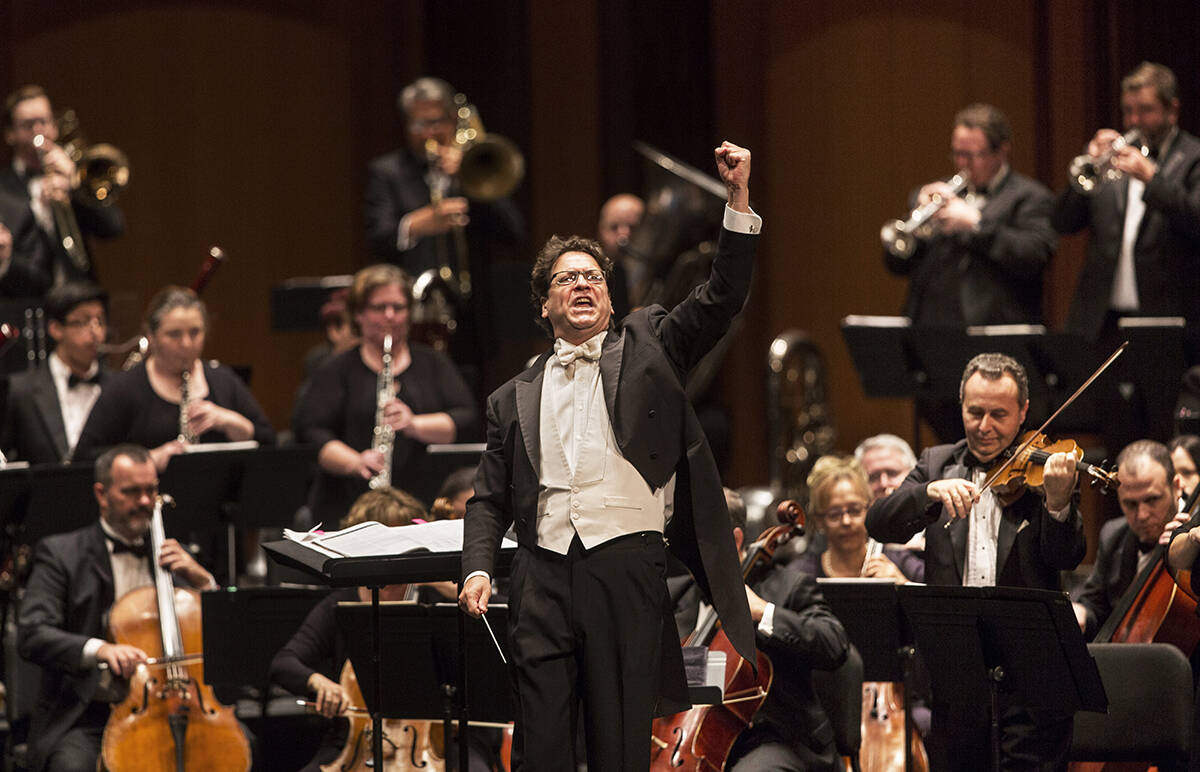Philharmonic goes with great composers, and Bugs Bunny, in new season

Donato Cabrera bridges the artistic chasm between Beethoven and Bugs Bunny.
“When I think of ‘Bugs Bunny at the Symphony,’ I think of the fact that those cartoons are what got me interested in classical music, before I even knew that there was such a thing as classical music,” the Las Vegas Philharmonic’s music director says. “I think most Americans, for many generations, they see Bugs Bunny rubbing the scalp of Elmer Fudd to ‘The Barber of Seville’ overture and they don’t even know that it’s a classical piece of music.”
The Jan. 7 return to the music layered into those great Warner Bros. cartoons, “Bugs Bunny at the Symphony,” is just one slice of the nine-piece pie that is the 2022-23 Las Vegas Philharmonic season. The symphony’s series premieres at 7:30 p.m. Sept. 17 with “American Classics.” The showcase celebrates a quartet of American composers: William Grant Still (“Festive Overture”), George Antheil (“Hot-Time Dance”), Wynton Marsalis (Violin Concerto in D) and Ferde Grofé (“Grand Canyon” suite).
Another celebration of American composers, “Appalachian Spring,” featuring the string trio Time for Three, follows on Oct. 15. Artist-in-residence Joshua Roman, an inspiring and inventive cellist, will be featured in “Cabrera Conducts Elgar &Sibelius” on Nov. 19.
Further highlights include “Handel’s Messiah” (Dec. 3),” “Cabrera Conducts Saint-Georges, Chopin and Mozart” (Feb. 11), “The Music of John Williams” (March 4), “A Night at the Opera” (April 1), and the season-closing “Cabrera Conducts Tchaikovsky” (May 6).”
Since he was appointed as the Philharmonic’s music director in 2014, Cabrera has advanced familiarity and adventurism in his selections each season. That’s why we see Bugs, and the celebration of John Williams’ soaring scores (with “Jaws,” “Superman,” “Star Wars” and “Harry Potter and the Sorcerer’s Stone” in the program), and especially the first two performances of the season.
“The music that I chose is a reflection of who we are, and who we would like to be, institutionally and artistically,” Cabrera says. “Going forward, there’s a definite leaning into American music, and that’s totally reflected in the first two concerts, by design. ‘Rhapsody in Blue’ is played all the time, ‘American in Paris is played, and “ ‘West Side Story’ is, too.
“They are staples of what could be considered American symphonic tradition, but there is so much more music out there.”
After 2021-22’s Beethoven-heavy slate, the idea is to present a season that allows the Philharmonic to recover from its COVID-19 pause.
“Like all arts organizations, the Philharmonic is still finding its way back,” Cabrera says. “The music that was chosen last year, with trying to submit all of Beethoven’s symphonies in one season, as well as something by a living American composer, was a great statement.”
That message continues through 2023, as Cabrera and the symphony try to reconcile artistic merit with making money.
“It’s an interesting question, how we make that balance. But I don’t think of the ticket sales and marketing first,” Cabrera says. “We want to bring the best shows. Look at something like the John Williams concert, which of course serves the marketing and ticket sales needs. But so many classical musicians think of John Williams as the greatest living American composer, period, for everything he has done. So, I look at it from that angle, and it works for us.”
John Katsilometes’ column runs daily in the A section. His “PodKats!” podcast can be found at reviewjournal.com/podcasts. Contact him at jkatsilometes@reviewjournal.com. Follow @johnnykats on Twitter, @JohnnyKats1 on Instagram.